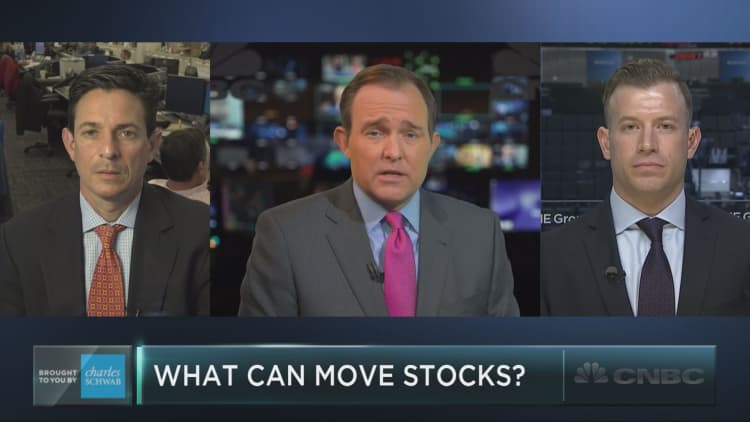


Political uncertainty is increasing, valuations are rising, and after the S&P 500's 7 percent rise in three months, respected voices are urging caution.
Yet the market is setting records left and right for its lack of movement.
Consider this: Despite widespread predictions that a Donald Trump presidency would beget major market moves, the period surrounding his inauguration has been not only by the least volatile start to a presidential term in recent history, but by some measure, the least volatile period that stocks have ever seen.
Through Tuesday, the has gone 36 sessions trading within a 1 percent range from the day's high to its low — something it has never before done, based on data going back to 1978.
And it's not as if traders widely expect pent-up anxiety to spur a kinetic move: The CBOE Volatility Index, which measures expectations of market moves over the past 30 days, is essentially at a post-financial-crisis low.
Contrast that to widespread predictions that Trump would lead to greater market volatility due to widespread uncertainty about the policy path he would pursue, not to mention his explicit goal of making U.S. policy "more unpredictable."
To be sure, publicly calling for more volatility in the year ahead has become a bit of a New Year's tradition for investment strategists, up there with drinking champagne and singing "Auld Lang Syne." Still, they were half right: The policy unpredictability has come, even if the market volatility has lagged behind.
To Craig Johnson, senior technical research analyst at Piper Jaffray, this contrast can be explained by the "wait-and-see" approach by many investors.
"A lot of investors are trying to digest the move we've seen post- the election," Johnson said Tuesday on CNBC's "Trading Nation," referring to the big run-up after Trump's surprise win, which many have pinned on hopes of lower taxes, less regulation and bigger infrastructure spending. "We've seen the market move up on some of those promises, and now they're waiting to see if those ultimately come through."
For some, Trump's focus on health care and immigration policy has been a frustration.
"We don't have resolution on the immigration issue, and every moment and every tweet that the White House expends on that topic is a tweet that could be talking about deregulation or tax cuts or other candy that the mewling market wants to devour," Michael Block, chief strategist at Rhino Trading Partners, wrote in a Wednesday morning missive.
While noting that the "lack of detail around what's going to happen with infrastructure spending, overall tax policy, and bank deregulation is starting to worry people," Block adds that taking the other side of the trade could prove risky, given that "it only takes a little tax cut talk and we will get to new highs."
That all leaves investors stuck between the heavenly vision of a pro-business administration, and the hellish specter of trade wars and geopolitical turmoil. Trump's presidency increases "both the potential upside as well as the potential downside over the long term," Raymond James market strategist Andrew Adams wrote in a note published Wednesday.
With such disparate outcomes on the table, investors are left with few enticing options — which could explain the lack of movement. In such an environment, making a big macro call based on admittedly sketchy evidence could prove costly indeed.






